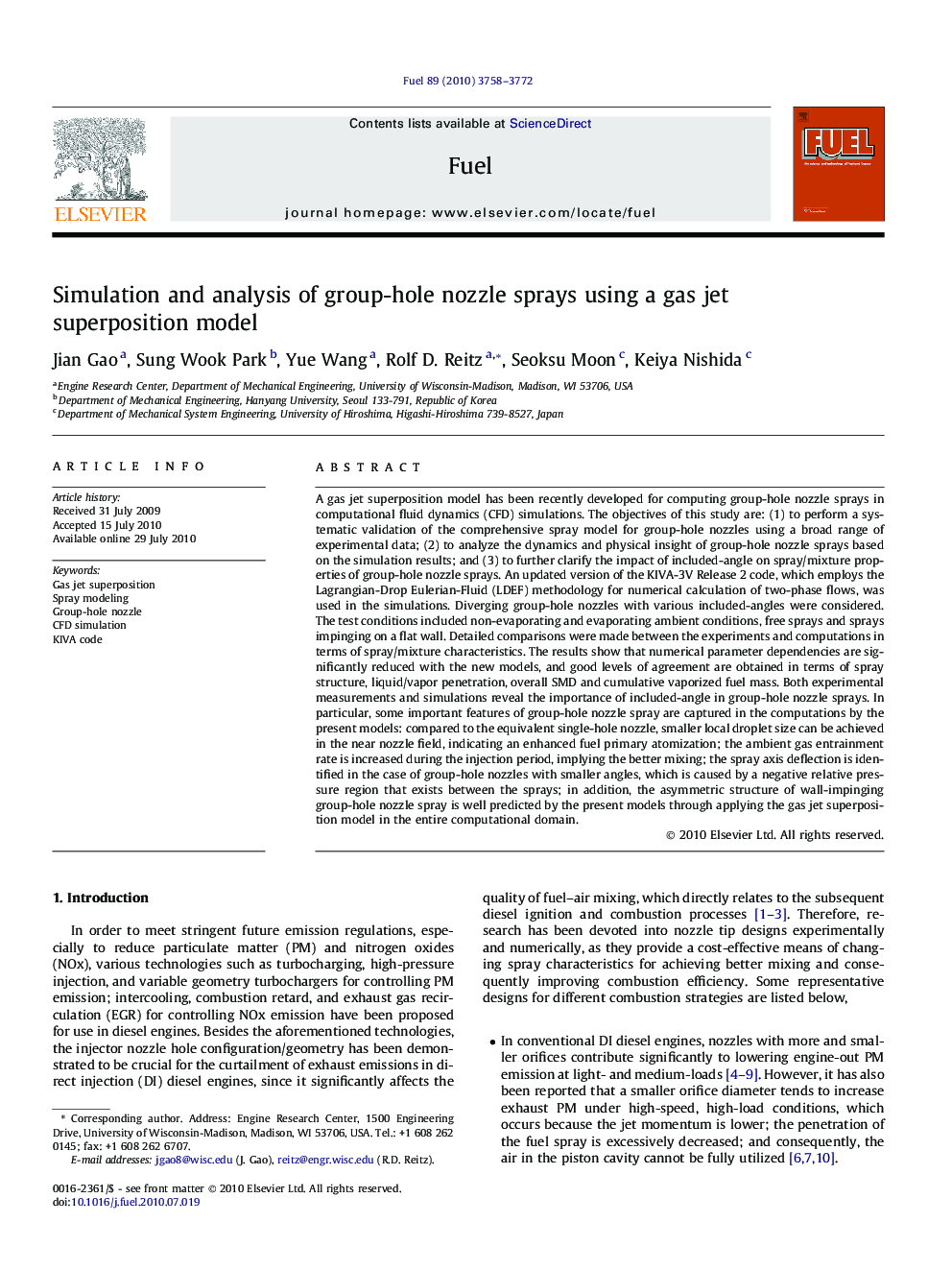| کد مقاله | کد نشریه | سال انتشار | مقاله انگلیسی | نسخه تمام متن |
|---|---|---|---|---|
| 206457 | 461187 | 2010 | 15 صفحه PDF | دانلود رایگان |

A gas jet superposition model has been recently developed for computing group-hole nozzle sprays in computational fluid dynamics (CFD) simulations. The objectives of this study are: (1) to perform a systematic validation of the comprehensive spray model for group-hole nozzles using a broad range of experimental data; (2) to analyze the dynamics and physical insight of group-hole nozzle sprays based on the simulation results; and (3) to further clarify the impact of included-angle on spray/mixture properties of group-hole nozzle sprays. An updated version of the KIVA-3V Release 2 code, which employs the Lagrangian-Drop Eulerian-Fluid (LDEF) methodology for numerical calculation of two-phase flows, was used in the simulations. Diverging group-hole nozzles with various included-angles were considered. The test conditions included non-evaporating and evaporating ambient conditions, free sprays and sprays impinging on a flat wall. Detailed comparisons were made between the experiments and computations in terms of spray/mixture characteristics. The results show that numerical parameter dependencies are significantly reduced with the new models, and good levels of agreement are obtained in terms of spray structure, liquid/vapor penetration, overall SMD and cumulative vaporized fuel mass. Both experimental measurements and simulations reveal the importance of included-angle in group-hole nozzle sprays. In particular, some important features of group-hole nozzle spray are captured in the computations by the present models: compared to the equivalent single-hole nozzle, smaller local droplet size can be achieved in the near nozzle field, indicating an enhanced fuel primary atomization; the ambient gas entrainment rate is increased during the injection period, implying the better mixing; the spray axis deflection is identified in the case of group-hole nozzles with smaller angles, which is caused by a negative relative pressure region that exists between the sprays; in addition, the asymmetric structure of wall-impinging group-hole nozzle spray is well predicted by the present models through applying the gas jet superposition model in the entire computational domain.
Journal: Fuel - Volume 89, Issue 12, December 2010, Pages 3758–3772